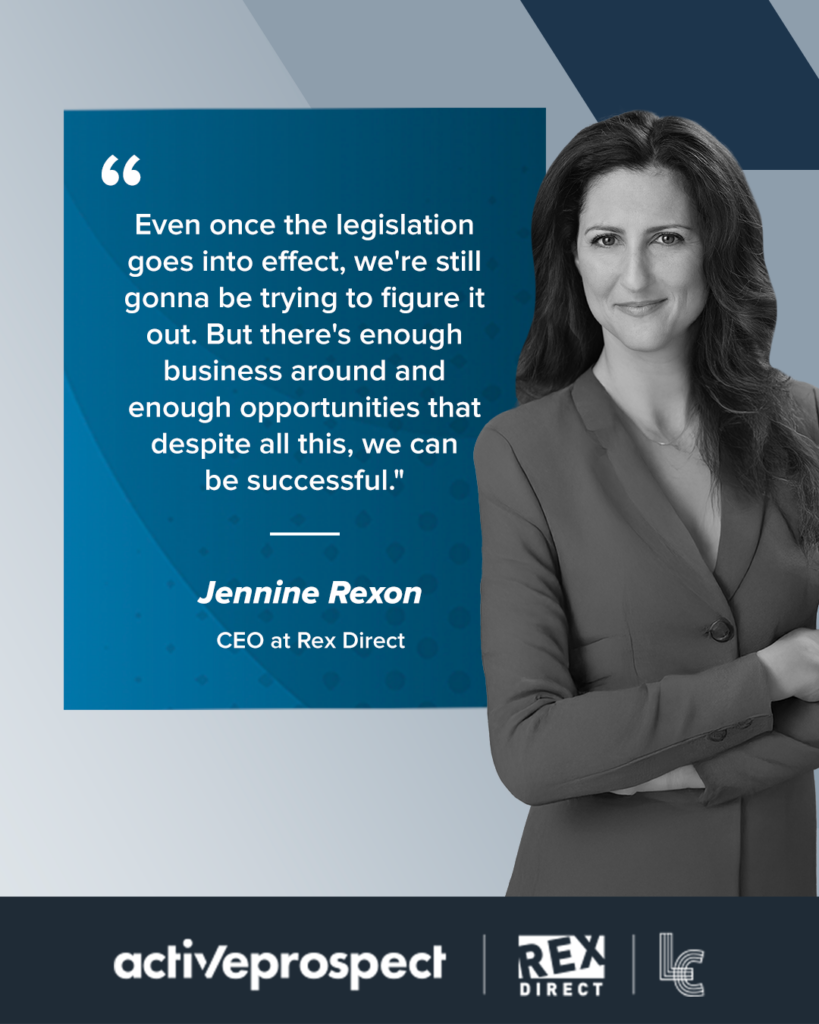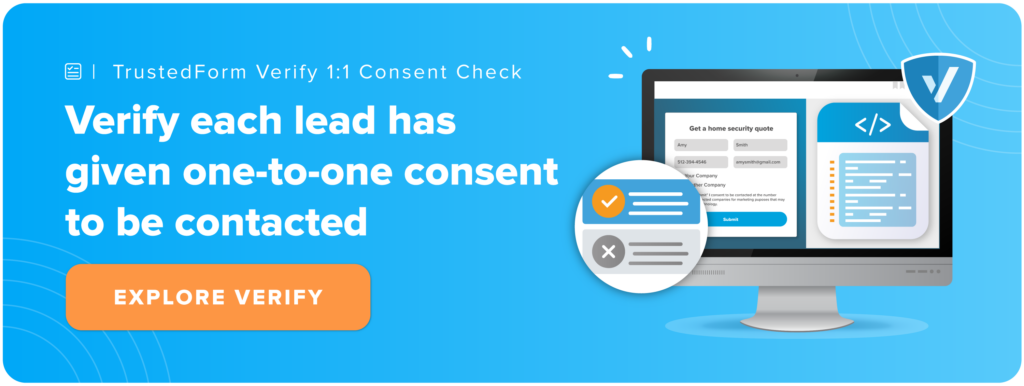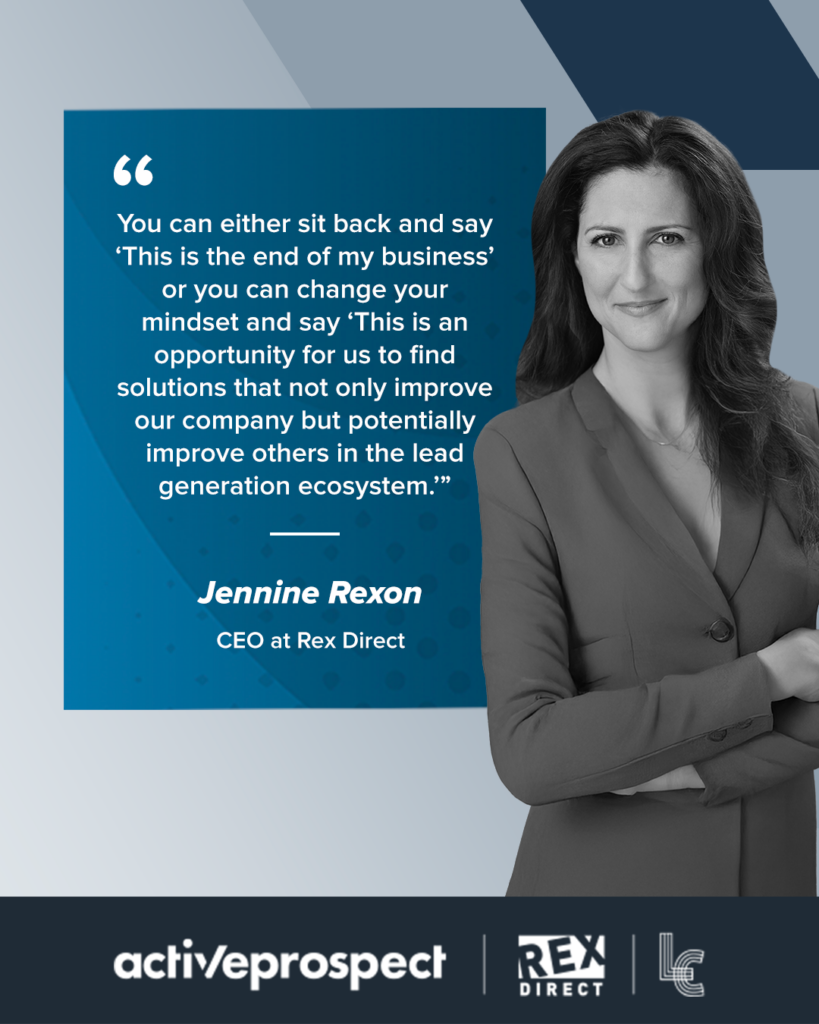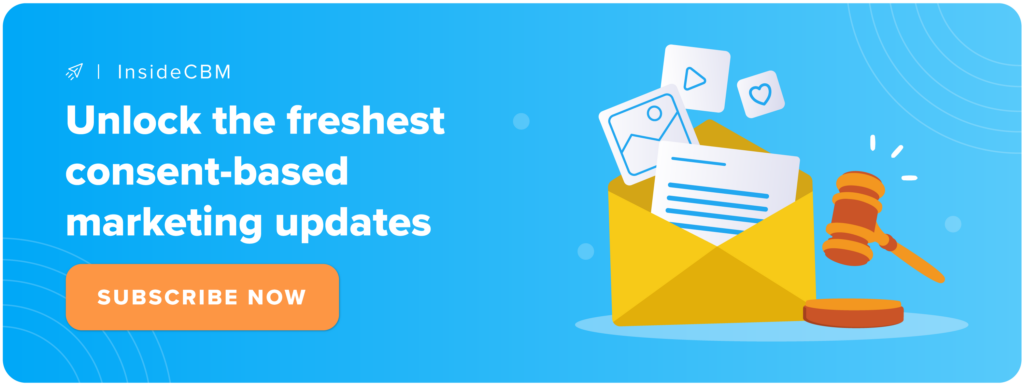Facing the challenges of lead generation in an evolving regulatory landscape

In the rapidly changing field of performance marketing, recent regulatory updates levied by the Federal Communications Commission (FCC) present unique challenges – especially the fervently discussed one-to-one consent rule under the Telephone Consumer Protection Act (TCPA).
In our recent webinar “TCPA success formula: Turning regulatory challenges into opportunities”, our Vertical Leader of Financial Service, Michael Peronto, along with Jennine Rexon, CEO at RexDirect, and Joey Liner, Chief Consultant & Strategist at Liner Connections, discussed the striking impact the new rules are having on the lead generation industry, exploring solutions and opportunities for businesses to navigate these regulatory changes.
From initial shock to steady stride: The lead gen industry’s journey with the FCC’s one-to-one consent rule
According to Joey, at first there was denial – much like the initial stage of grief. The rule was set for January 2024 but was fortunately postponed by a year. During this period, the industry largely remained in disbelief, with little substantial action taken. While some prominent TCPA attorneys sounded the alarm, the performance marketing community didn’t rally en masse to comment or raise awareness. Brands heavily reliant on lead generation for customer acquisition were surprisingly quiet.
According to Joey’s experience, as the reality of the rule set in, the industry cycled through anger and depression, and has now reached acceptance. Today, many brands and lead generators are proactively preparing, aiming to be ready before the holiday season – a critical period for lead generation. With Medicare open enrollment and the recent elections, it’s a busy time, and the industry is racing against the clock. Progress is being made daily, and businesses are steadily preparing for the January 27, 2025, deadline.
Jennine acknowledges that the lead generation industry has always faced challenges but has managed to grow and thrive over the past two decades. She sees this legislation as an opportunity to develop new tools and practices that benefit consumers, buyers, and those involved in lead generation campaigns.
However, Jennine observes that companies are reacting differently: some are in denial and shifting to other marketing initiatives, others are tackling the changes head-on, and many are doing a mix of both. The uncertainty surrounding the impact on business, technology, and legal aspects means there are still many unknowns, even as the January deadline approaches. Despite these challenges, Jennine believes there are enough opportunities for the industry to succeed as it navigates the evolving landscape.

Prechecked vs. unchecked boxes on lead forms: What lead buyers need to consider
The debate around checkboxes – whether they should be prechecked, have a “select all” option, or require individual selection for each brand – is ongoing. Joey advises lead buyers to engage in open dialogue with each other and with lead generators to understand what buyers find acceptable.
He suggests that if buyers insist on the most conservative route (individual selection), lead generators should discuss potential price increases due to anticipated lower consumer engagement. Joey emphasizes the importance of ongoing conversations within verticals, such as mortgage and insurance entities, to eventually reach a consensus on best practices. These discussions are crucial and should be happening regularly, especially as the deadline approaches.
Michael highlights potential volume issues when switching to unchecked boxes, as lead generators may deliver fewer leads. He advises discussing this requirement openly with lead generators to explore alternatives for maintaining volume. According to him, open communication is key to navigating these changes, as it allows both parties to consider various factors such as volume, pricing, and reporting.
Michael suggests that while requesting unchecked boxes may initially seem daunting, it could potentially increase conversions, justifying a higher price per lead. He emphasizes the importance of dialogue between lead buyers and generators to address these complexities and find a mutually beneficial way forward.
Jennine shares she’s currently testing whether prechecked or unchecked boxes yield better results. While the focus is on lead quality and conversions, monetization from a lead generation standpoint is also crucial.
In one test, Jennine used an exclusive buyer per page format, making checkboxes irrelevant. However, for multi-checkbox options, she conducted split tests on a lower-traffic site to compare opt-in and opt-out methods. Preliminary results indicate that opt-out generates more leads than opt-in.
Ultimately, according to Jennine, the solution that balances compliance and profitability will likely be adopted widely once its effectiveness is demonstrated.

Monitor consent language and one-to-one consent with TrustedForm Verify
Regarding the new one-to-one consent rule, ActiveProspect strongly advises programmatically verifying that your company name appears on the form to ensure compliance. To facilitate this, we’ve developed TrustedForm Verify, a real-time TCPA compliance verification tool.
TrustedForm Verify allows you to manage and approve consent disclosures and guarantee that each lead has provided one-to-one consent to be contacted by a specific brand. It supports two types of one-to-one consent checks:
- Exclusive offering: Confirms if your company name is listed and if the disclosure language meets your requirements.
- Multiple offerings: Validates your company’s listing among several checkboxes or tiles.
Learn more about TrustedForm Verify 1:1 Consent Check here.
Automating this process is crucial, as manual audits can be challenging. ActiveProspect offers two solutions for this:
- LeadConduit: Ingests the TrustedForm Certificate, validates the information using TrustedForm Verify, and sends it to your CRM or contact center.
- TrustedForm Certificate API: Allows integrations with home grown and third party platforms to check if the certificate has evidence of consent being given in a one-to-one manner and used language that you have approved.

How lead generation can benefit from these changes
Jennine sees the legislative change as an opportunity, not a death knell for business. She’s exploring new lead form formats, audience targeting, and inbound call strategies to turn this challenge into growth. By shifting to a click model and refining lead quality, she believes the industry can thrive. It’s about finding the positives and making an impact, whether through TCPA technology, AI, or innovative partnerships.

According to Joey “diversification is key” for customer acquisition in 2025. While inbound strategies have grown significantly, they aren’t suitable for all sectors. He suggests exploring affiliate traffic and directing brands to manage their own traffic and messaging. Technologies can assist in tracking and moderating these efforts.
Additionally, Joey recommends considering first-party media, which many brands have avoided due to lack of expertise. By investing in specific platforms according to the intended target audience – Facebook for seniors, for example, – brands can optimize their own media and enhance the consumer experience, underscoring the importance of diversification.
Jennine is collaborating with a client to distinguish between first-party and third-party data and their applications. She’s found that many clients have untapped data that can be leveraged for future gains. Even without TCPA compliance for calls, this data can enhance targeting, retargeting, and finding similar audiences.
By doing so, conversion rates, media spend efficiency, and lead value can all improve. Jennine sees this as an opportunity to repurpose assets and use first-party data to refine lead generation strategies by 2025.
Joey proposes leveraging email to contact leads, as it’s not governed by TCPA. By sending an offer via email and requesting they complete a new opt-in form with preloaded consent language, you open the door to subsequent calls. If you’re not already engaging in email marketing, Joey advises to make this a priority.
Additionally, direct mail can be effective, especially for audiences like Medicare recipients or those interested in debt settlement loans. The key is to explore creative, compliant communication channels beyond just calling.
Will performance metrics improve for lead sellers and buyers?
According to Jennine, the key metrics to focus on aren’t cost per lead or cost per call, but rather your acquisition rates. She emphasizes the importance of open communication and transparency with your lead generation partners to optimize results. Jennine finds this level of data sharing still lacking in the industry.
If you’re a lead buyer, prioritize your cost per acquisition (CPA) goals. While costs may rise and volume could be affected, maintaining fairness, honesty, and transparency can create a mutually beneficial situation, ultimately helping to restore volume.
Takeaways
Here are the main takeaways from our webinar “TCPA success formula: Turning regulatory challenges into opportunities”:
- Initial reactions to the FCC one-to-one consent rule were largely of denial and confusion. However, the industry is now moving towards acceptance and seeking solutions.
- Diversification is key in navigating these changes. Businesses are exploring new channels and strategies, including inbound calls, affiliate traffic, first-party media, and audience retargeting.
- The new rule may lead to an increase in lead quality and conversion rates, but it could also result in higher costs for lead generation.
- The industry needs to focus on improving the consumer experience and ensuring compliance with the new rules.
- Businesses should be communicating with each other and sharing insights to navigate these changes together.
As always, ActiveProspect is here to help you stay connected and in the loop with expert insights and timely updates. Watch the full episode now and subscribe to InsideCBM to keep up with consent-based marketing.

DISCLAIMER: This page and all related links are provided for general informational and educational purposes only and are not legal advice. ActiveProspect does not warrant or guarantee this information will provide you with legal protection or compliance. Please consult with your legal counsel for legal and compliance advice. You are responsible for using any ActiveProspect Services in a legally compliant manner pursuant to ActiveProspect’s Terms of Service. Any quotes contained herein belong to the person(s) quoted and do not necessarily represent the views and/or opinions of ActiveProspect.





